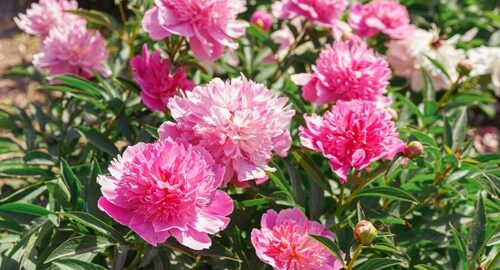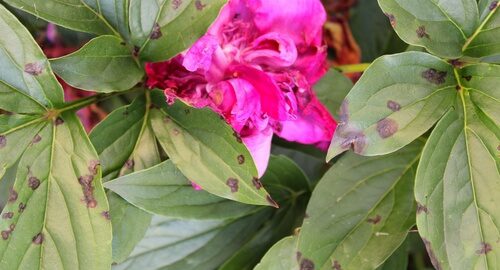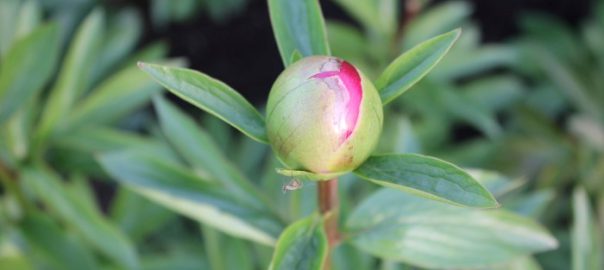Download brochure
Free brochure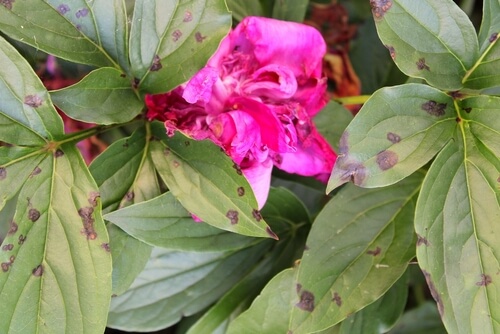
Peony leaf problems – Everything about the treatment
- Blog
- 7 May 2025
Peony leaf problems? It happens often. The leaves can suffer from pests, disease, or insufficient care. There are several ways to prevent this. Take care of the peony’s environment. If you notice the problem too late, there are still treatments that can help the plant survive. For example, by sterilizing your garden tools.
Do you want more information about leaf problems in peonies? Read the rest of the article.
Summary of the blog
- Spot peony leaf problems early – look for brown, black or yellow leaves, curling or mildew
- Act quickly and carefully – remove affected leaves, avoid wet foliage, use natural sprays or fungicides
- Prevention is key – ensure good location, drainage, yearly maintenance and clean garden tools
How to Identify Peony Leaf Problems
Did you just receive a bouquet of peonies and want to keep them alive as long as possible? Then you should recognize leaf problems before you can act. You can identify leaf issues by looking for the following signs:
- Peonies have brown spots on the leaves; this means that the peony has a disease or water-related stress
- Peonies have black spots on leaves, which means leaf blotch or another fungal infection
- Peony leaves curling or yellowing, that can be due to environmental stress or nutrient deficiencies
- Do you see mildew on peony leaves? These are signals of fungal growth
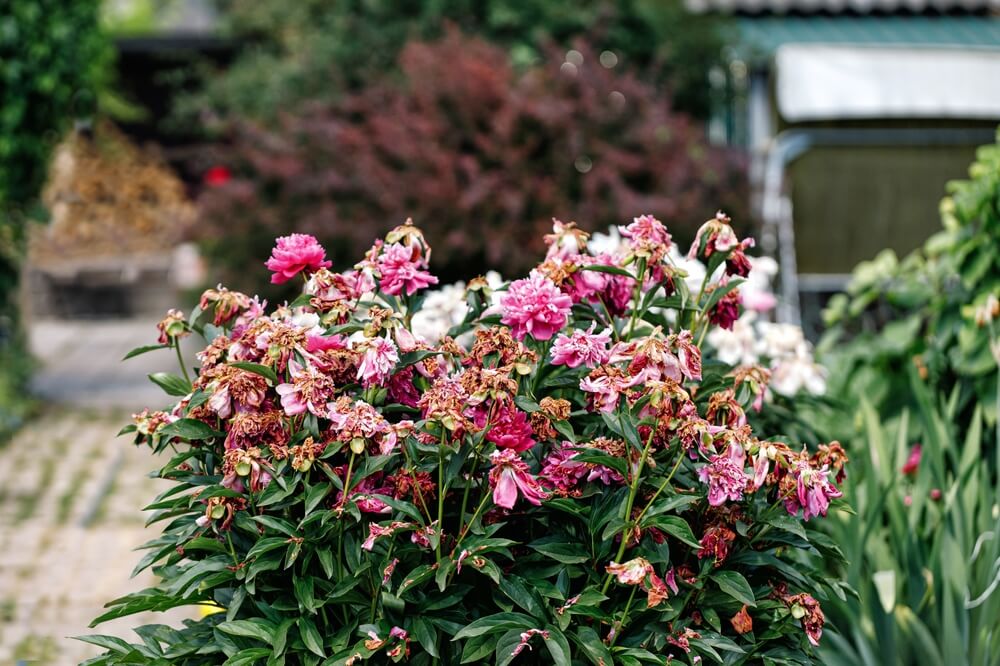
What are common peony leaf diseases?
Peonies are just like humans; they can suffer from a variety of diseases and symptoms. To treat your peony properly, it’s important to recognize which disease it has. Look at the following diseases the peony can have.
Peony leaf blotch
This is a common fungal disease that begins with irregular purple or brown spots on the leaves. Over time, the spots merge into larger blotches, especially on the lower leaves. It’s not always peony leaf blotch— it can sometimes be mistaken for sunburn or nutrient deficiencies.
Botrytis blight (grey mold)
If peonies are kept in a cool, damp environment for too long, they can develop fuzzy grey mold. This often leads to rapid decay. If you notice this on the leaves or stem, move the plant to a different, drier environment.
Powdery mildew
This is an easily recognizable white, powdery substance that appears on the upper surface of the leaves. It spreads quickly, especially in humid conditions. Move the plant to a sunnier location and reduce watering if you see this.
Reony rust
Peony rust is a less common disease. It presents as reddish-brown pustules on the underside of the leaves and can significantly weaken the plant if left untreated. If you’re unsure about the source of the infection, continue reading this blog.
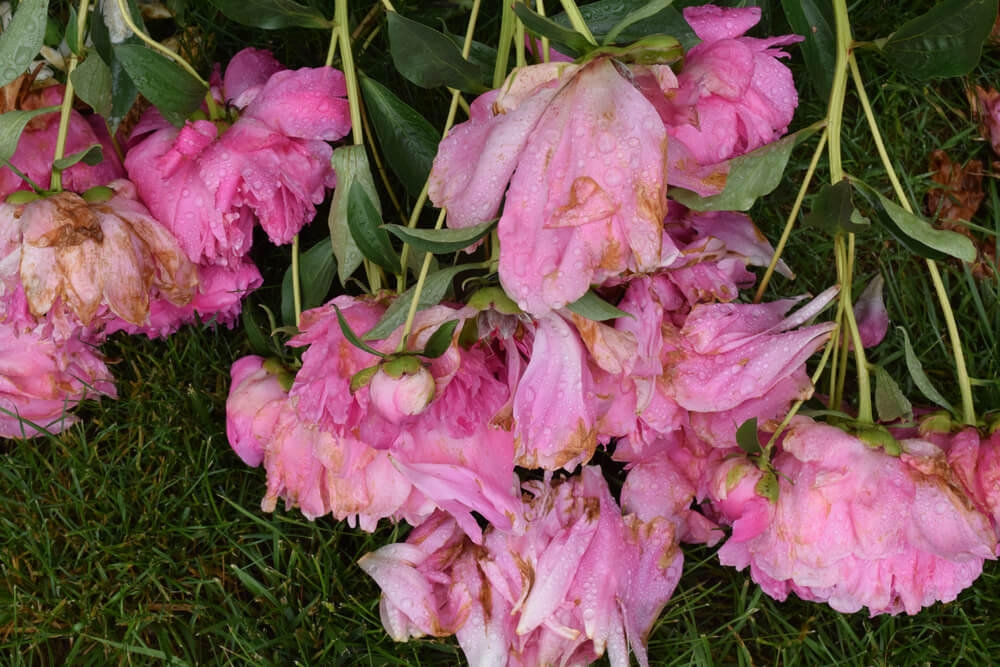
How to treat the blotch treatment on peonies?
Peony leaf blotch, also known as Cladosporium paeoniae, is one of the most common fungal infections affecting these beautiful flowers. It often begins with small, irregular spots on the leaves and can quickly spread if not addressed in time. While blotch might seem alarming at first, the good news is that it can usually be managed with the right approach. The key is to act early, before the infection takes over larger parts of the plant.
Whether you’re caring for peonies in your garden or in a bouquet, a few proactive steps can significantly increase their lifespan and restore their healthy appearance. Below you’ll find a simple, effective treatment plan to help your peonies recover and thrive.
Step 1: Remove infected folioge by cutting away and dispose of affected leaves – do not compost
Step 2: Avoid overhead watering, the wet foliage encourages fungal growth
Step 3: Apply fungicides, this copper-based or sulfur fungicide can help control the disease
Step 4: Improve airflow and space them well to enhance air circulation
How to treat the spots and mildew?
If you see spots or mildew on the leaves, you must take care of the peony more. You do not have to throw the peonies in the garbage. First use some organic sprays such as neem oil or baking soda solution. Then water the peonies early in the morning, maintain healthy soil with proper drainage and use clean tools to avoid spreading pathogens.
Care-Related causes for peony leaf problems
Sometimes, leaf problems aren’t caused by disease but by improper care. Even small mistakes can lead to issues. Common care-related causes include the following causes, that you can easily prevent them from doing:
- Overwatering or poor drainage can cause root rot and leaf discoloration
- Lack of sunlight or dense planting reduces air circulation and encouraging mildew
- Sudden temperature changes or excess humidity can stress plants
- Fertilizer burn or nutrient imbalances may cause leaf spotting or curling
Prevention tips for healthy peony leaves
To avoid diseases, spots, and mildew, follow these tips to keep your peony leaves healthy. If you follow these steps, evidently your peonies will live longer and stay as beautiful as they already are. The steps you should take:
Step 1: Space peonies to ensure good airflow
Step 2: Water at the base of the plant to keep leaves dry
Step 3: Remove dead foliage in the fall to reduce fungal spores
Step 4: Mulch lightly to retain moisture but prevent mold
Step 5: Perform annual maintenance like pruning and soil testing
Natural remedies to support healty peony leaves
Not every gardener want to rely on chemical treatments right away. Fortunately, there are severel natural solution that can help prevent or treat leaf problems in peonies. For example, compost tea can boost the plants immunity, and companion planting with herbs like garlic may deter pests. A simple spray made with baking soda or diluted tea tree oil can also combat early fungal signs.
When to call the garden expert?
If you love peonies, and you will have them each year, you want to keep them for a long time. If the peonies fail to live and have repeated the same symptoms year after year, you may want to consult a professional if:
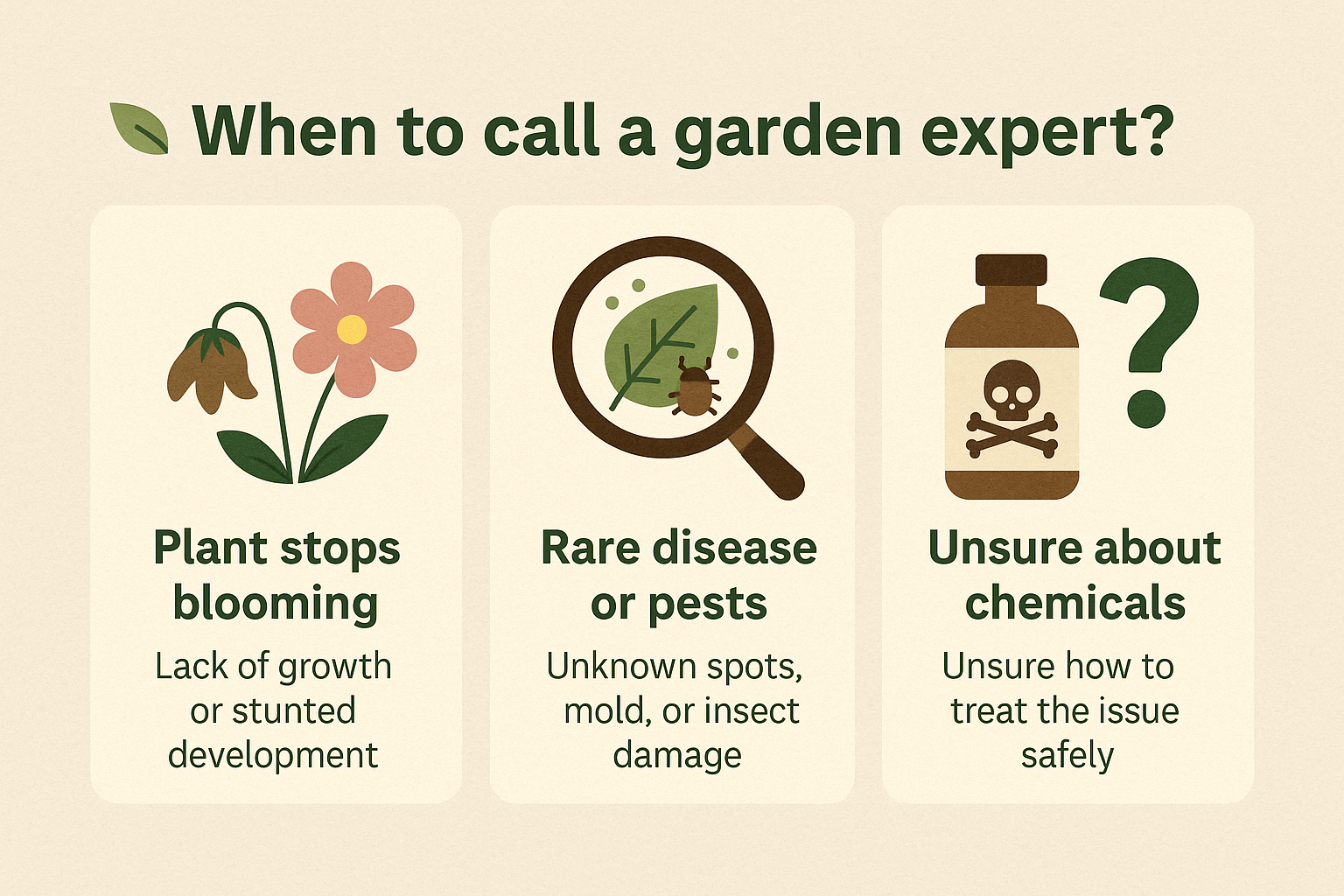
Do you want more information about treating peonies?
Would you like to know more about how you can treat your peonies right? Groot & Groot can help you. Are you looking for nice peonies, and you want to order them in bulk? We supply worldwide to professional growers and (export) wholesalers. At Groot & Groot we can grow peonies all year round. So, we are not seasonal. Lastly, feel free to contact us. It is also possible to email us directly: info@grootgroot.nl or call: 0228-208050.
